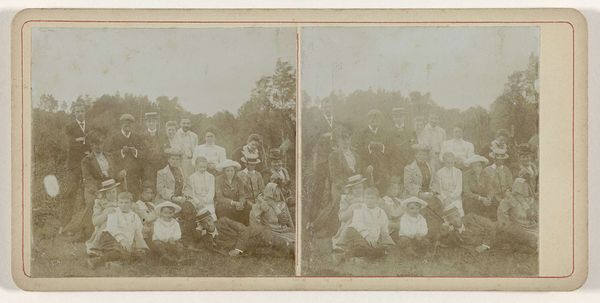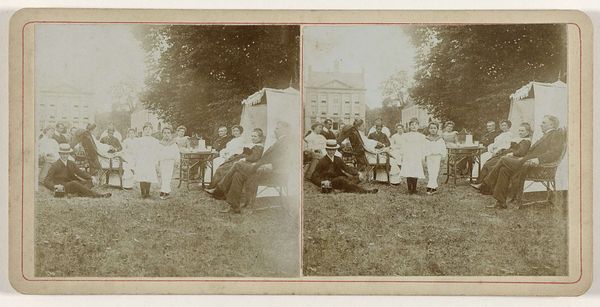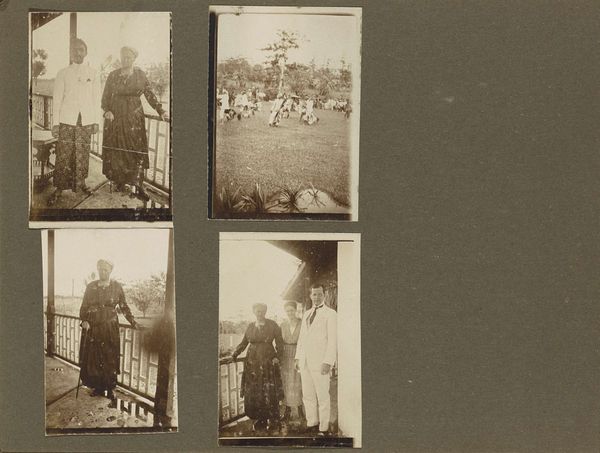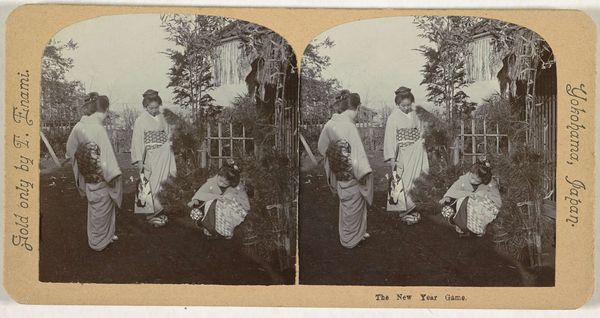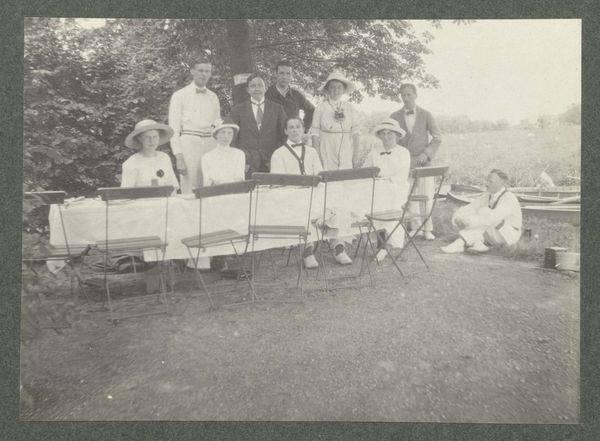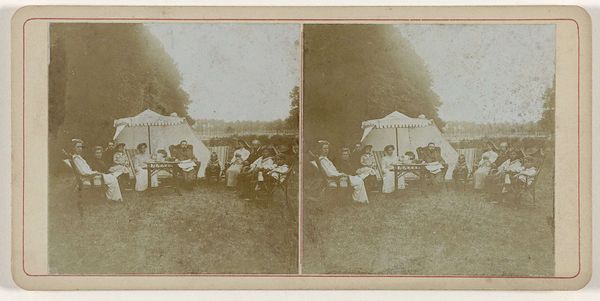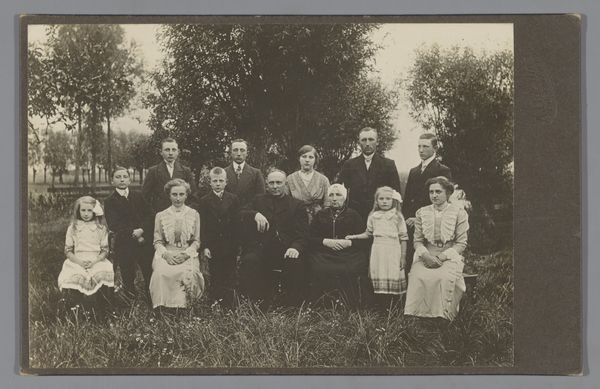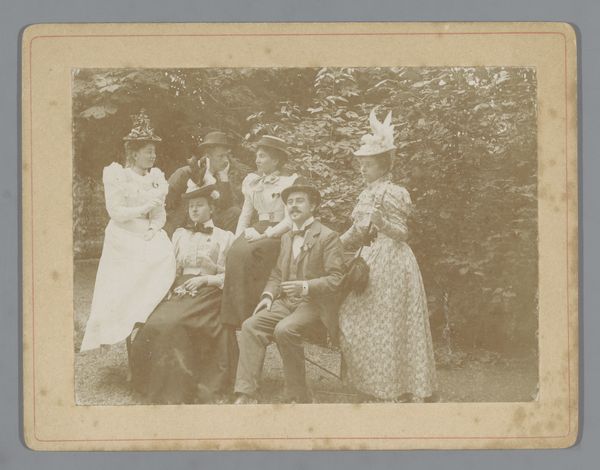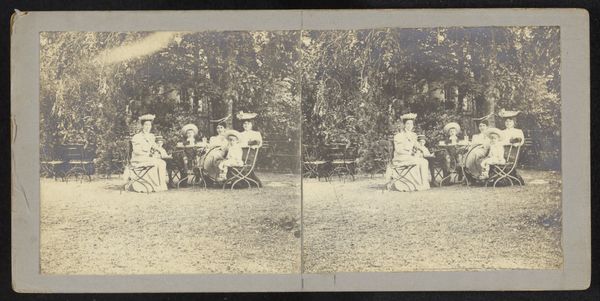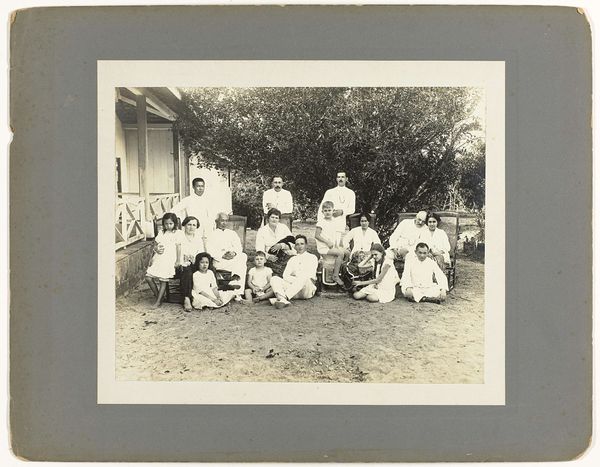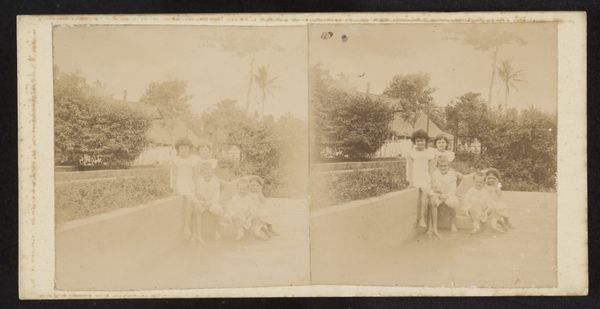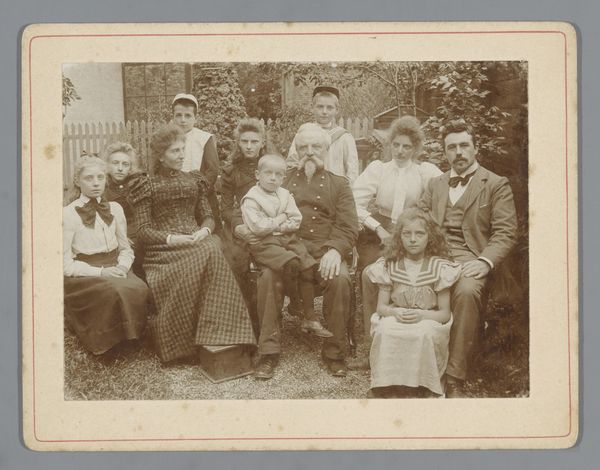
Groepsportret met onder andere leden van de familie Kessler 1912
0:00
0:00
contact-print, photography
#
portrait
#
pictorialism
#
contact-print
#
photography
#
coloured pencil
#
group-portraits
Dimensions: height 80 mm, width 157 mm
Copyright: Rijks Museum: Open Domain
Editor: This is a photograph titled "Groepsportret met onder andere leden van de familie Kessler," taken in 1912. The material is listed as a contact print. I'm struck by how posed yet candid it feels. There's a formal quality, but also a sense of ease, almost like we're intruding on a private gathering. What do you see in this piece, especially considering its historical context? Curator: I see a powerful document reflecting early 20th-century social dynamics, particularly concerning class and representation. Consider the family's status. How does their visual portrayal in this group portrait, utilizing pictorialism to soften the image, reinforce or perhaps subtly challenge the established power structures of the time? Is the 'ease' you perceive truly egalitarian, or does it mask underlying social hierarchies being performed for the camera? Editor: That's interesting. I hadn't thought about how the "candidness" might be staged. Is it possible the family was making a conscious statement about their position in society through the picture itself? Curator: Precisely! Photography at the time was becoming increasingly accessible, yet portraiture remained a symbolic act. By choosing to represent themselves in this manner—note the specific clothing, posture, and setting—what message are they crafting for both themselves and future viewers? Does the seemingly relaxed composition inadvertently highlight the exclusivity of this leisure and social standing? Also, I wonder about the absence of people from different social classes in the photograph. Editor: So, it's not just a simple snapshot, but a calculated presentation of identity. It shows one family’s access to wealth. This really shifts how I understand the photo. Thanks! Curator: Indeed. Understanding the historical context reveals how artistic choices are interwoven with power dynamics. Looking closely unveils these social and political layers.
Comments
No comments
Be the first to comment and join the conversation on the ultimate creative platform.
